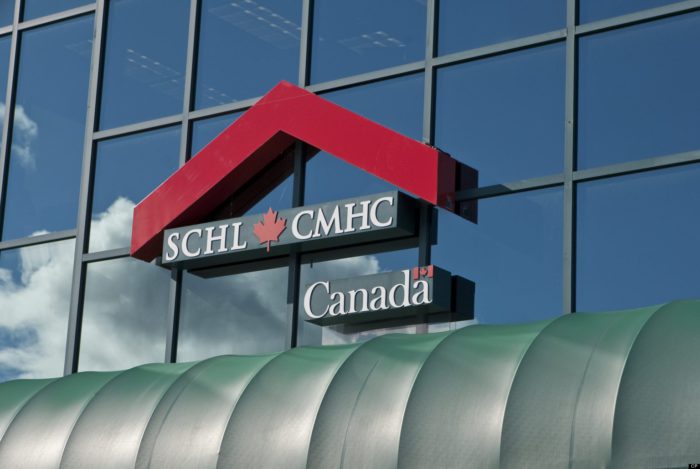The Liberal government wants to give its much-criticized First-Time Home Buyer Incentive (FTHBI) a redo.
In its Fall Economic Statement this week, the government said it’s going to make it easier for borrowers to qualify.
Effective “spring 2021,” first-timers who use the program will be able to purchase a home up to 4.5 times their household income (currently four times) and participate if their household income is $150,000 or less (previously $120,000 or less).
The changes apply to borrowers in greater Toronto, Vancouver and Victoria only. If you live outside these areas, you’re stuck with the regular overly restrictive FTHBI 1.0 limits.
The FTHBI program essentially works by loaning you down payment money at zero interest until you sell the property. Buyers can make the minimum down payment and the government will chip in 5% or 10% more, depending on whether it’s a resale or newly built home. That reduces a borrower’s monthly payment, interest expense and default insurance premium.
In exchange, the buyer must share some of their home price appreciation with the government (CMHC)—in the same proportion as the incentive percentage.
If the home value drops by the time it’s sold, the government assumes its proportionate share of the loss.
If you’re interested in more details, here is:
- more info on how it works
- an eligibility calculator
- a calculator to assess whether you’d benefit.
How’s the Uptake So Far?
Not stellar.
As of September 30, 2020, CMHC had approved 9,520 applications for the program, representing $173.1 million in shared equity mortgages.
When the program was introduced, its target was roughly 33,000+ applications and $400+ million a year. So, the last year’s performance was thoroughly underwhelming.
We predicted as much when the program was announced in spring 2019 because:
(A) most default-insured borrowers could qualify for more home without it, (B) it launched with many key details missing, confusing the entire mortgage industry, let alone layperson-consumers, and
(C) it was poorly explained with no easy way for borrowers to assess if they’d benefit. (CMHC eventually launched a more useful calculator.)
All that said, the government arguably deserves credit for trying to improve what’s been a dispensable program thus far.
Will More Buyers Bite?
Yes. FTHBI 2.0 lets a lot more people use government-subsidized money to lower their borrowing costs. It also permits greater buying power.
As it stands, for a household buying a resale home with $120,000 of income, 6% down and $700 of other monthly debt, they’d qualify for a purchase price of roughly:
- $510,638 — using FTHBI 1.0 (today’s version)
- $558,344 — if they chose not to use the FTHBI
- i.e., just got a plain 94% LTV insured mortgage
- $574,468 — using FTHBI 2.0
Side Note: Interestingly, this hypothetical buyer would have qualified for $589,847 under the originally proposed FTHBI 2.0. But the feds cut the maximum leverage borrowers can have from 5 times household income to 4.5 times. We’re awaiting comment from the Department of Finance on why it did that, but presumably it was to avoid over-stoking Canada’s flaming housing market.
As noted above, CMHC’s equity sharing scheme reduces the borrower’s loan amount, thus saving interest and insurance premiums. FTHBI 2.0 is also more effective at reducing borrowers’ debt ratios, thus making it easier to qualify.
To get the maximum buying power, however, a borrower must default-insure their mortgage through Sagen or Canada Guaranty. They are the only mortgage insurers that still allow gross/total debt service ratios up to 39% / 44%.
By contrast, CMHC now limits borrowers to just 35% / 42%. The result is that users seeking more buying power will choose one of the two private insurers, further reducing CMHC’s market share.
Criticism Remains
The government says the new FTHBI “will help to make homeownership more affordable.”
It adds: “With a minimum down payment, this targeted expansion will raise the maximum house price for eligible first-time home buyers in [greater Toronto, Vancouver and Victoria] from about $505,000—the current program parameters—to about $722,000.”
But critics say that added buying power will just fuel more demand, make homes less affordable and eventually be a wash.
“In general, these ‘affordability’ measures just stimulate demand and bump prices further,” BMO senior economist Robert Kavcic told Yahoo Finance Canada.
Facts of Note
- 3 out of 4 FTHBI approvals got a 5% down payment incentive
- 1 out of 4 FTHBI approvals got a 10% down payment incentive
- “The program is intended to benefit middle-income first-time home buyers facing housing affordability gaps,” says the Government.
- “Millennials and new Canadians will be the main beneficiaries of the program.”
- 79% of approved applications have a first applicant with an age between 20 and 39 years, with the median age being 32 years.
(Figures as of Sept. 30, 2020. Source: CMHC)

 log in
log in

3 Comments
Have variable-rate mortgage discounts peaked or are they still improving? There’s been a 10 basis point improvement in the discounts at the big 6 banks over the last few weeks. At the same time, 3 month BA rates appear relatively steady within the 0.23-0.3% range since June. Any insight would be highly appreciated.
When they say Greater Toronto, do they also mean
Greater Vancouver and Greater Victoria? I sure hope so as those areas are pretty much as high
The government’s FALL ECONOMIC STATEMENT 2020 did not clarify this but my understanding is that it is supposed to apply in Greater Vancouver and Greater Victoria as well.